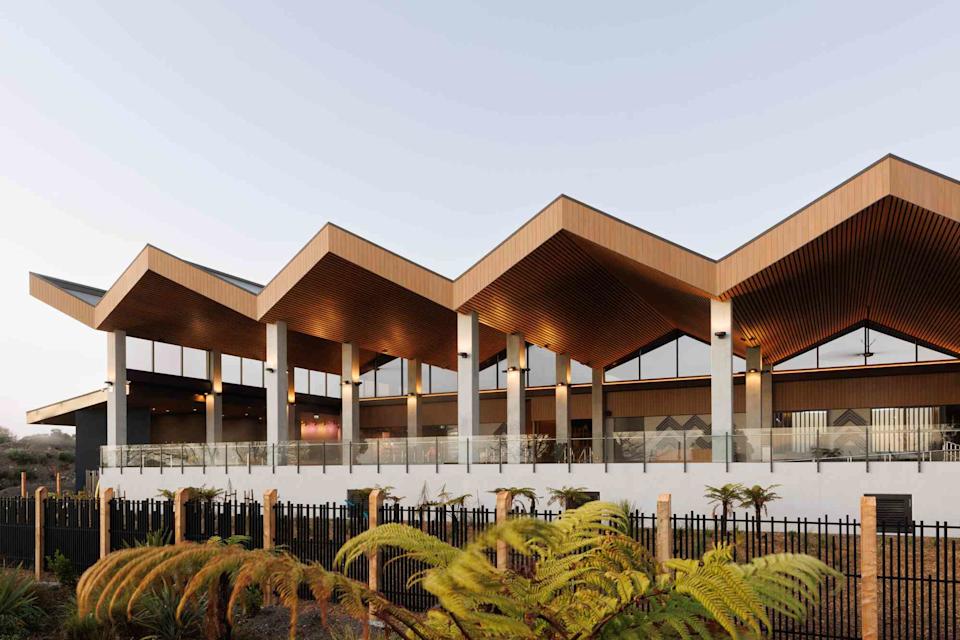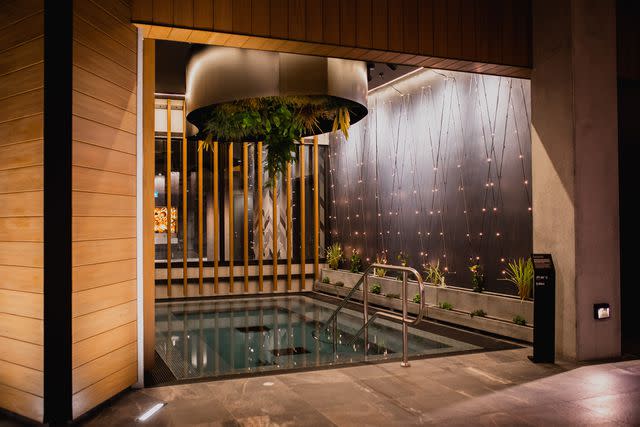This Stunning Māori-owned New Zealand Spa Uses Centuries-old Traditions — and Has a Stargazing Pool and a Geothermal Mud Lounge
Highlights include a waterfall shower and fire and ice caves.

Courtesy of Wai Ariki Hot Springs and Spa.
There’s something in the water in Rotorua. The North Island town in New Zealand, which surrounds Lake Rotorua, is known for its geothermal activities. In fact, for centuries, people have been flocking to the thermal spring, which is believed to have healing properties.
Now, there’s an even more meaningful way to experience its power at the new Wai Akiri Hot Springs and Spa.
Opened in June 2023, the property is owned and run by the Māori iwi of Ngāti Whakaue, part of the Te Arawa Confederation. (The Māori are the indigenous people of New Zealand.) It has mindfully infused its longtime traditions and beliefs into the spa offerings.
“Ngāti Whakaue have long recognized the therapeutic benefits of bathing in the geothermal waters and have developed their own distinct spa and bathing culture that despite being unique in world terms, is largely unrecognized,” Arvid Ditchburn, the spa’s acting general manager told Travel + Leisure, emphasizing that Wai Ariki is the island nation’s “first purpose-built” spa with a “strong infusion of our own bathing culture,” making it the only one owned by mana whenua (holders of customary rights and responsibilities over land).

Courtesy of Wai Ariki Hot Springs and Spa.
Here, guests are invited to take part in the Wai Whakaora restorative journey, which starts with a blessing at a mauri (life force) stone before heading to the Te Iringa, a “waterfall shower to cleanse the body and soul” and serve as a “symbolic connection to the waterfalls of the ancestral lands of the Ngāti Whakaue people.”
Other highlights include the Te Ahi Tupua Tongariro (fire and ice caves), which Ditchburn said was inspired by the story of Ngātoroirangi that brought geothermal energy to the region. It immerses guests in an alternating hot-and-cold, wet-and-dry experience since “in Māori wellbeing practice, it is understood that moving between extreme temperatures improved vigor and stamina.”

Courtesy of Wai Ariki Hot Springs and Spa.
There’s also Tirotiro Whetū — a stargazing pool with views of the Ngāti Whakaue mountain of Ngongotahā, and Kōpūa, the star that guided the Te Arawa to Aotearoa New Zealand — as well as a te pae paru (geothermal mud lounge) that uses the natural properties of mud both to “rejuvenate the skin and connect with the land, as Ngāti Whakaue has done for centuries,” he said, noting its warriors used mud paste to heal scars and wounds.
Additionally, there’s The Sanctuary space, which offers spa treatments, like a mirimiri (massage), using natural actives, essential oils, botanical extracts, and herbal preparations that are founded on centuries-old healing practices.

Courtesy of Wai Ariki Hot Springs and Spa.
Beyond the services, the setting itself is also a mesmerizing element, inspired by Ngāti Whakaue narratives including local whakairo (Māori carvings) and rooted in the area’s volcanic color palette. “Additionally, the roof line announces that people are about to embark on a journey to wellness,” Ditchburn said of the inspiration drawn from a Te Arawa canoe. “The building is truly a thing of beauty," he added, calling the structure “both a visual and sensory experience.”
A restorative journey starts at $110 New Zealand dollars (about $65), while a combo of the Mirimiri Wai Ariki massage plus Ahuru Mowai sanctuary bathing starts at NZ$ 245 (about $143).
“A visit to Wai Ariki Hot Springs and Spa is an experience like no other,” Ditchburn said. “Visitors will experience a unique healing and relaxation journey, with every perfectly designed element contributing to a total well-being experience — the essence of which is a connection to the Ngāti Whakaue people, and the places and practices that have defined them through the centuries.”
For more Travel & Leisure news, make sure to sign up for our newsletter!
Read the original article on Travel & Leisure.


